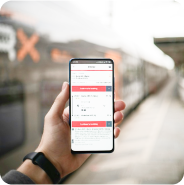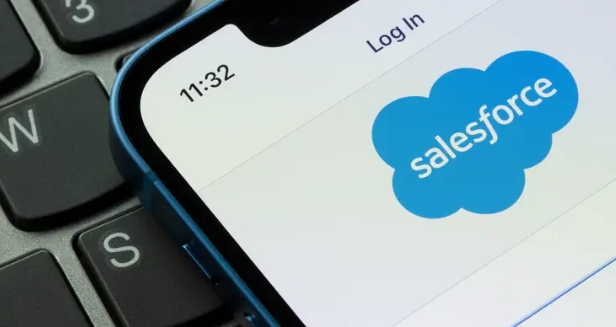Customer acquisition costs (CAC) are one of the most critical metrics in sales and marketing. High CAC can eat into profit margins and make scaling difficult. For large-scale sales operations, reducing CAC without sacrificing lead quality or conversion rates is a must. So, this guide explores actionable strategies to lower CAC and improve overall sales efficiency
Understanding customer acquisition costs
Customer acquisition cost is a simple metric that describes how expensive it is to acquire each new customer. As such, CAC directly affects profitability, scalability, and healthy business growth.
When it costs more to acquire new customers than what they produce in revenue, it is difficult to scale or sustain a business. CAC needs to be understood and controlled in order to maintain a high return on investment on sales and marketing efforts.
This calculation includes all expenses associated with customer acquisition within a specific period, such as ad spend, marketing software, salaries, and any other promotional costs.
If your spending on sales and marketing is increasing, but new customer numbers are stagnant or increasing at a slow rate, your CAC is too high. A high CAC can mean inefficiency in targeting, messaging, or sales processes, so it must be addressed with optimized acquisition strategies.
Why CAC matters in large-scale sales
For any business looking to expand, the greatest challenge is not acquiring more customers but acquiring them cost-effectively. Growth is only possible if the number of customers increases but the cost of acquiring them decreases or remains in check.
Having a high cost per customer acquisition will drain profit margins, and it will progressively become harder to reinvest in marketing, product development, and customer retention strategies. In these cases, businesses will experience cash flow constraints that limit their ability to scale their business. When you reduce CAC, you fhave ree resources that help you:
- Improved marketing ROI – Each dollar spent acquiring customers generates more return.
- Shorter sales cycles – Reducing friction in the buyer’s process helps convert leads faster.
- Increased profitability – Reduced acquisition costs directly translate to higher margins and financial health.
- Competitive edge – An efficient acquisition process allows you to outcompete others and gain market share.
When CAC is optimized, businesses can grow faster, sustain that growth, and build long-term customer relationships without constantly increasing acquisition costs. So, it’s not just about cutting costs—it’s about making every investment perform better.
10 proven strategies to lower the cost per customer acquisition
Large-scale sales teams must focus on efficiency and precision to acquire more customers at a lower cost. The following 10 strategies will help you refine your targeting, streamline your sales process, and ensure your resources are directed toward high-value prospects.
1. Optimize targeting with data-driven insights
Sales teams tend to spend budget on non-converters, leading to high CAC and low ROI. Instead of targeting broad groups, use data-driven insights to refine your approach. AI-driven analytics and predictive modeling allow high-intent lead identification, maintaining marketing and sales efforts focused on the most promising leads.
How to optimize targeting:
- Use CRM data to know customer behavior and preferences.
- Leverage AI-driven lead scoring to discover potential buyers.
- Use predictive analysis to determine when a lead will likely convert.
Pro Tip: Use Conquer’s real-time AI analytics to discover optimal opportunities and sequence them in your CRM. By integrating targeting insights directly into your sales process, Conquer enables teams to focus on leads with the highest likelihood of conversion, reducing wasted spend and lowering the cost per customer acquisition.

2. Build a strong lead qualification process
Not all leads are created equal. Salespeople waste a lot of time dealing with unqualified leads, increasing costs of acquisition with little conversion. A standard lead qualification process ensures that only the most suitable prospects go through the pipeline, avoiding wasted effort and improving close rates. To do this, you must:
- Use a lead scoring process that is engagement, budget, and buying intent-based.
- Automate lead qualification with CRM-integrated AI workflows.
- Define clear qualification criteria, e.g., Budget, Authority, Need, and Timeline (BANT).
Pro Tip: Automate lead scoring within your CRM to flag high-priority prospects. This frees reps from wasting time on dead ends and instead allows them to concentrate on leads that are actually ready to buy.
3. Automate sales outreach & follow-ups
Manual follow-up on prospects is slow and raises the cost per customer acquisition. There are sales automation tools that can do repetitive follow-up, so the leads are called without burdening your sales reps. Automated workflows also keep the conversation alive, increasing conversion chances. To ensure the best sales automation practices, aim to:
- Apply automated email flows to engage prospects on autopilot.
- Apply chatbot conversations to engage early leads.
- Apply multi-channel sales automation (email, SMS, call) to stay top-of-mind.
Pro Tip: Conquer’s sales engagement optimization allows reps to schedule multi-channel follow-ups directly within Salesforce, so every lead is properly nurtured. This takes the manual outreach gaps out of the picture, reducing CAC without compromising engagement.
4. Enhance retargeting and nurture campaigns
It costs much less to re-engage a current lead than to win a new one. Many companies let leads go cold instead of nurturing them. A well-designed retargeting and lead nurturing campaign puts your brand in front of warm prospects, guiding them through the sales funnel. Here are some ways in which you can improve lead nurturing:
- Segment leads based on engagement levels and purchasing intent.
- Use email sequences tailored for each phase to deliver valuable content.
- Use retargeting ads in order to recapture abandoned site visitors.
Pro Tip: Implement a lead nurturing system into your CRM that allocates timely, relevant touchpoints, nudging leads toward purchase.
5. Improve sales and marketing alignment
Misalignment between sales and marketing teams leads to wasteful expenditure, poor targeting, and high customer acquisition costs. In ideal alignment, though, the two groups generate higher-quality leads, align messaging, and improve conversion rates. To ensure that sales and marketing teams are properly aligned, you can use:
- Joint dashboards for monitoring lead flow and conversion rates.
- Closed-loop feedback from sales to optimize marketing campaigns.
- Account-based marketing (ABM) for high-value target customers.
Pro Tip: Conquer’s real-time analytics provide sales teams with lead behavior data in real time, allowing them to align outreach activity with marketing efforts to maximize efficacy.
6. Use referral & affiliate programs
Referral and affiliate marketing yield high-value leads for a tenth of the cost of pay-per-click advertising. That’s because happy customers and partners can turn into your brand heroes and reduce reliance on expensive acquisition channels.
Generally, the best-performing referral programs include referral links with traceability so the conversions are tracked accurately. You can even consider building a partner affiliate campaign for wider reach, ensuring your message reaches beyond your initial target group.
Pro Tip: Encourage satisfied customers to share their experiences through testimonial campaigns and incentives, amplifying brand trust without increasing customer acquisition costs.
7. Focus on customer retention to reduce churn
It is 5x cheaper to retain a customer than it is to obtain one. Tackling customer churn reduces the need for new acquisitions, which allows businesses to maintain revenue without incurring customer acquisition costs.
Typically, companies with a low churn rate have one thing in common: they improve their customer onboarding process. You must also ensure to tailor support and proactive follow-up so your customers feel cared for throughout their buying journey. Lastly, you can try to implement loyalty programs to stimulate repeat business, as they’re quite effective.
Pro Tip: Use Conquer’s tools for customer interaction tracking and automating personalized follow-ups to reinforce retention and decrease churn.
8. Optimize your sales funnel for efficiency
An inefficiently organized sales funnel leads to drop-offs and lost conversions, increasing customer acquisition costs. Examining and optimizing every step of the process allows businesses to produce more leads with fewer resources. Here are some tips to help you improve funnel efficiency:
- Test calls-to-action and landing pages through A/B testing.
- Simplify forms and streamline sign-up processes.
- Identify drop-off points and make strategic changes accordingly.
Pro Tip: Use a reliable sales engagement tool with data-driven insights to analyze where leads are falling off so that teams can optimize the funnel and boost conversion rates.
9. Use content marketing for organic leads
Organic traffic is a less expensive alternative to paid acquisition. By regularly publishing quality content, companies can purchase inbound leads at a decent ad cost. However, to ensure maximum efficacy, you must:
- Write SEO-optimized blog posts on customer pain points.
- Take advantage of video content as product demonstrations and case studies.
- Repurpose the content in numerous formats (webinars, podcasts, infographics).
Pro Tip: Create a library of content that educates and guides prospects through the buying process without forceful sales pressure.
10. Reduce the sales cycle length with AI & automation
The longer the sales cycle, the greater the customer acquisition costs because the reps are busy with non-qualified leads. AI-driven automation accelerates the cycle by identifying high-intent buyers more rapidly and taking action on them. To speed up the sales cycle, you should:
- Use predictive analytics to rank conversion-ready leads.
- Automatically schedule with AI-powered tools.
- Use chatbots for real-time lead qualification.
Pro Tip: Conquer’s AI-powered analytics allow sales teams to spot and interact with ready-to-convert leads, avoiding unnecessary follow-ups and reducing sales cycle length.
Wrapping up
Lowering customer acquisition costs is not just about cutting spending—it’s about spending smarter. By leveraging AI, automation, and data-driven insights, large-scale sales teams can improve efficiency, enhance targeting, and optimize the entire customer journey.
Want to streamline sales and lower CAC? Schedule a demo with Conquer today and see how AI-driven insights can transform your acquisition strategy!






